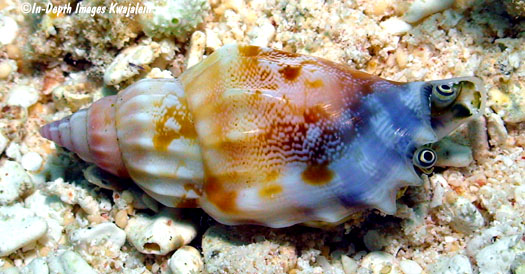
Tridentarius dentatus is common in the Marshalls, living in both lagoon and seaward reef habitats, usually in sandy or rubbly areas. On the seaward reef, they are common in sand patches, often buried in flake sand and fine rubble, at depths of 5 to about 25m, and they occasionally extend deeper. There are often larger specimens in some shallow lagoon sand patches, particularly in beds of Halimeda algae. The name is derived from the three pointed projections from the outer lip near the anterior end. Like other members of the family, the eyes are at the ends of long stalks. Shells range from about 22 to 52mm in length.

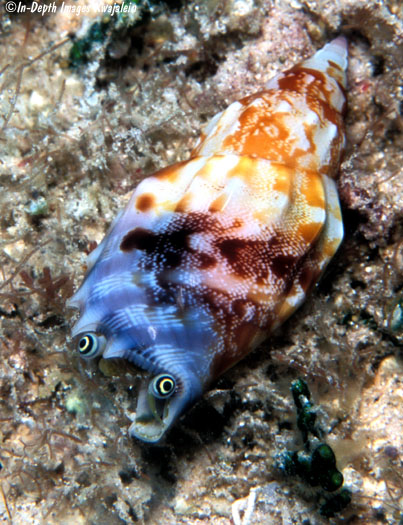
The shell can occasionally have darker blotches on the whorls.
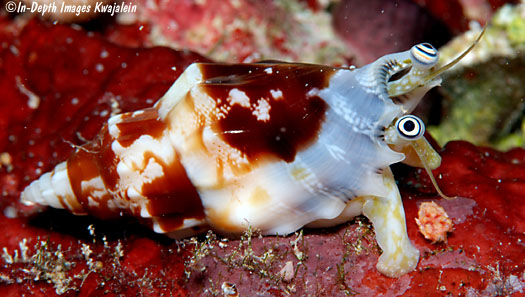
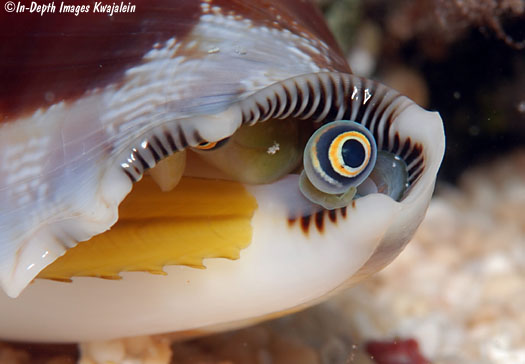
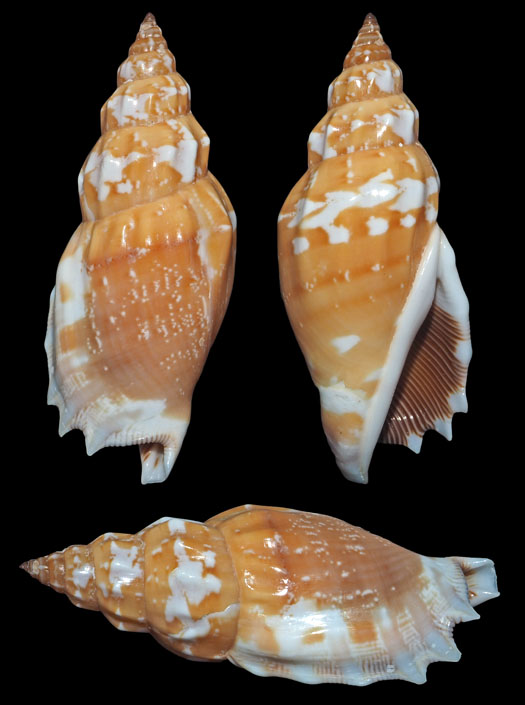
Created 1 October 2009
Updated 22 March 2020